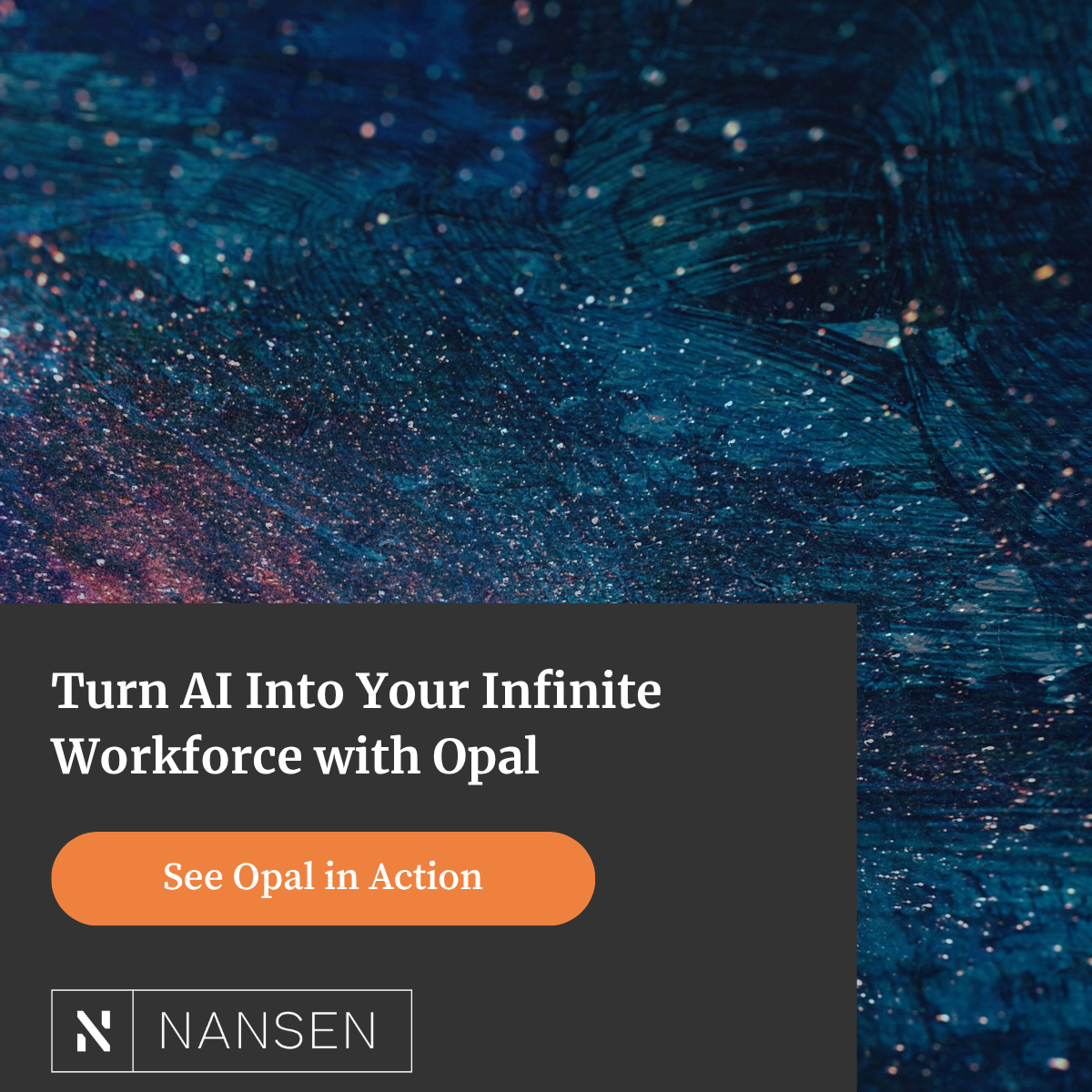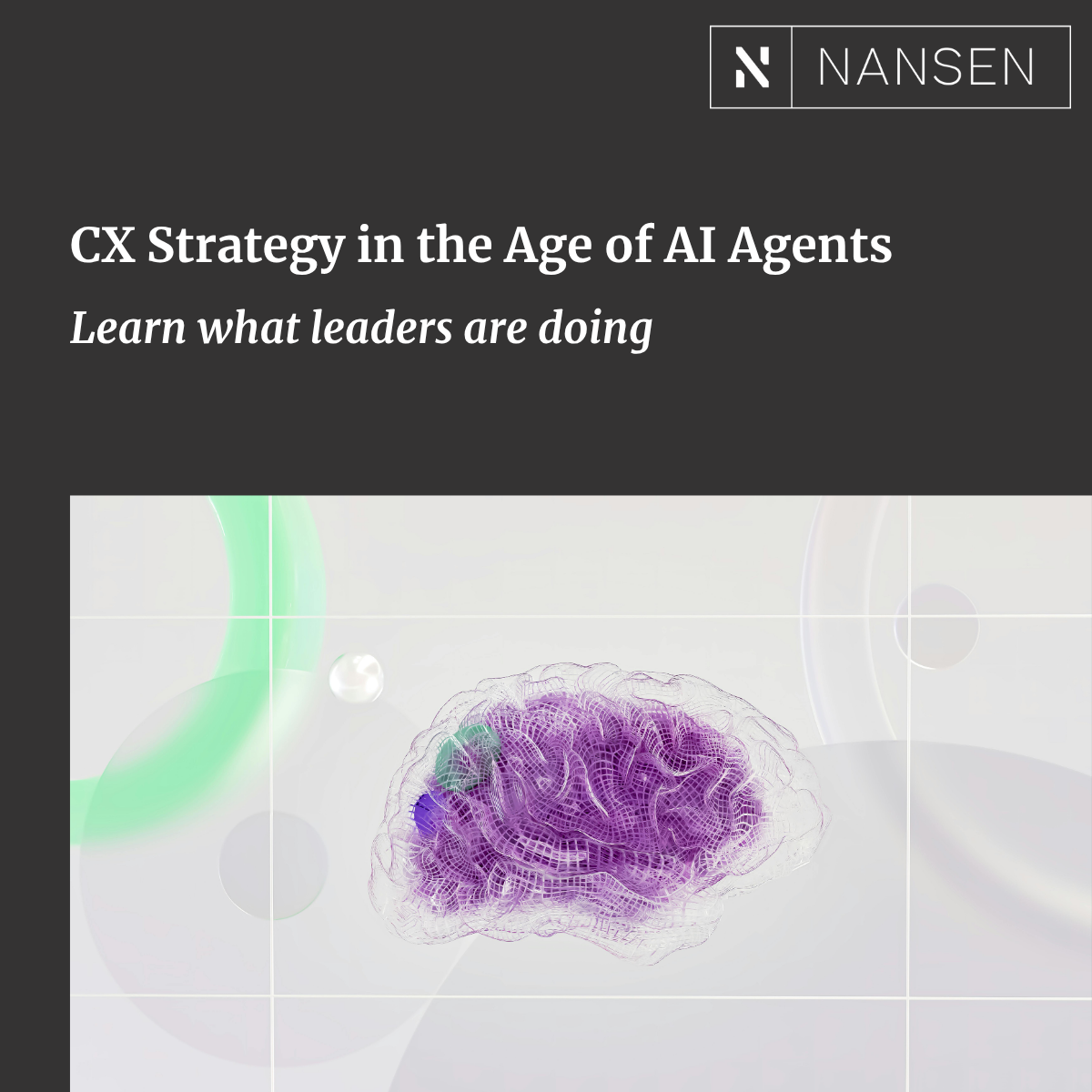Manufacturing is at an inflection point.
AI, automation, and buyer expectations are rewriting how products are marketed, sold, and supported. At the same time, supply chains remain fragile, legacy systems strain under new demands, and the workforce gap continues to widen.
At Nansen, we believe modernization isn’t about chasing the next tool — it’s about creating connected, adaptable ecosystems that help manufacturers think and move faster.
According to Forrester, U.S. B2B e-commerce sales are projected to exceed $3 trillion by 2027, driven by a new generation of digital-first buyers who expect transparency, personalization, and frictionless ordering.
Those expectations expose a growing divide between manufacturers still running on legacy stacks and those investing in intelligent commerce — systems that learn, respond, and evolve.
For manufacturers, that means one thing: it's time to modernize the platform that powers it all.
From Transactions to Transformation
Traditional e-commerce used to mean standing up a catalog, syncing ERP data, and hoping for the best. That model no longer works.
Modern manufacturers need platforms that:
- Simplify complexity across SKUs, configurations, and approval chains.
- Automate intelligence with AI that forecasts demand and personalizes interactions.
- Unify data and experience, connecting ERP, CRM, and PIM for real-time accuracy.
- Enable self-service and speed, so distributors and buyers can act without delay.
- Support resilience and iteration, adapting to change without costly rebuilds.
We call this shift Experience-Led Growth — designing every digital interaction to strengthen trust, reduce friction, and create measurable value.
The Composable Advantage
Manufacturers can’t afford to wait for large-scale rebuilds every time buyer behavior or technology changes. That’s why more of them are embracing composable commerce — modular, API-driven ecosystems that evolve continuously.
Composable architecture allows teams to:
- Add or replace components (CMS, checkout, analytics) without disrupting operations.
- Integrate AI services that analyze behavior, recommend products, or optimize performance.
- Scale globally while maintaining security, governance, and brand integrity.
Our clients see composability not as a buzzword, but as an operational strategy — a way to future-proof without slowing innovation.
Why We Recommend Optimizely — and How Nansen Makes It Work
At Nansen, our role isn’t to sell software. It’s to design digital ecosystems that deliver measurable business outcomes.
We recommend Optimizely B2B Commerce Cloud because it provides a flexible foundation for that work — an intelligent layer that unites data, content, and experimentation. But what makes it powerful isn’t the platform itself — it’s how you implement it.
How Nansen Applies Experience-Led Growth
Our approach combines strategy, design, and engineering to ensure technology truly serves people.
We help manufacturers:
- Reimagine buyer journeys around intent, not channels.
- Integrate intelligence across systems so decisions are made with data, not assumptions.
- Experiment continuously, using Optimizely’s Opal AI and testing tools to learn and adapt in real time.
- Design for humans, ensuring AI-driven decisions are transparent, trustworthy, and ethical.
It’s not about launching a new site — it’s about building a smarter, scalable way of working.
Proof in Action
Our work with global manufacturers has shown what’s possible when strategy and technology align:
- 47% increase in qualified lead submissions
- 60% lift in conversion rates
- Shorter quoting cycles, fewer manual processes, and measurable revenue growth
When we helped Teledyne FLIR modernize it's e-commerce experience, the goal wasn’t just to fix navigation. It was to make buying intuitive, to remove friction, and to create a foundation that scales — outcomes only achievable through composable, experience-led design.
Beyond Commerce: The Intelligent Factory Interface
In manufacturing, e-commerce doesn’t exist in isolation. It’s the digital interface to the entire factory.
Optimizely serves as a control center for this ecosystem — orchestrating data, content, and decisions across departments.
When paired with Nansen’s AI and Experience-Led Growth frameworks, it becomes a platform for continuous learning and adaptation.
With that foundation, manufacturers can:
- Build intelligent distributor portals and customer dashboards.
- Automate workflows that sync production, logistics, and sales in real time.
- Deploy AI that turns every transaction into a feedback loop for improvement.
This is how modern manufacturers stay resilient — not by chasing tools, but by designing systems that evolve with their business.
The Nansen Takeaway
Replatforming is no longer about replacing outdated technology. It’s about reframing digital maturity — building systems that can think, adapt, and scale.
Optimizely One gives manufacturers a proven foundation for that change. A recent Forrester TEI study confirms its value. But technology alone isn’t the differentiator — how you design and implement it is.
At Nansen, we help manufacturers connect the dots — strategy, data, design, and technology — into one continuous growth engine.
Let’s talk about how to reimagine your e-commerce ecosystem for the intelligent manufacturing era.
Contact us to book a strategy session.












